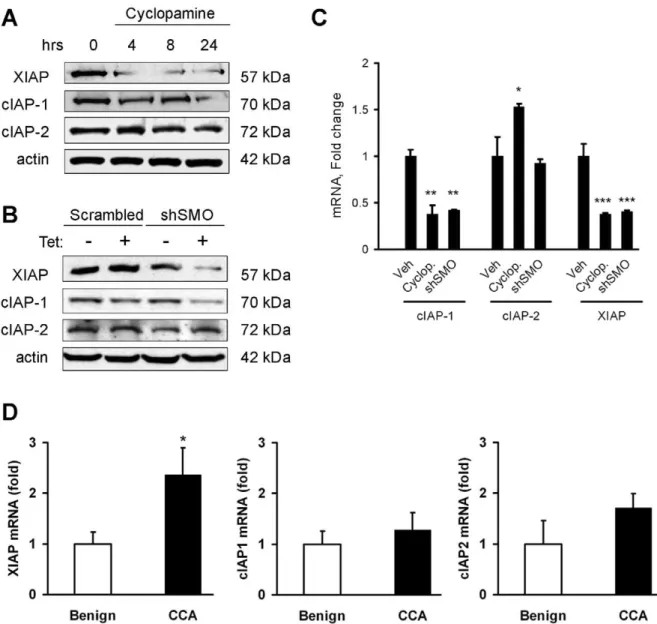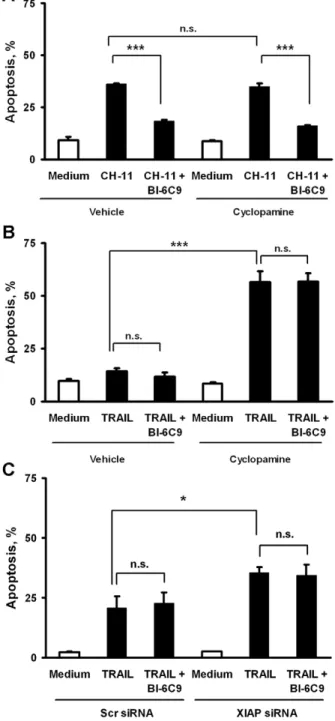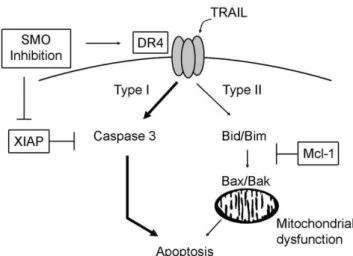Hedgehog inhibition promotes a switch from Type II to Type I cell death receptor signaling in cancer cells.
Texto
Imagem



Documentos relacionados
To test whether DZNep affects TRAIL signaling in various NHL B-cell lymphoma-derived cell lines, we investigated apoptosis induced by treatment with TRAIL in cells pre-treated
To further confirm that the UA-mediated inhibition of cell proliferation is through regulation of COX-2 signaling in colon cancer cells, we pretreated SW480 cells with celecoxib (CB,
In summary, this study showed that inhibition of AR activity caused increased activation of Wnt/ β -catenin pathway and this increased activation promoted androgen-independent growth
Hence, we have demonstrated the anti-cancer mechanism for MBT-induced cell cycle arrest and autophagy in HXO- RB44 cells to be through inhibition of PI3K/Akt signaling
Interestingly, elevated levels of cFlip protein have been reported in different types of cancer [5,6,7,8], and cFlip gene silencing can sensitize tumor cells to TRAIL induced cell
Using pancreatic cancer cell lines with or without expressing mutated K-ras , we demonstrated that the inhibition of endogenous PKC activity sensitized human pancreatic cancer
To assess Hh signaling pathway differences between EGFR-TKI-sensitive and -resistant NSCLC cells, three NSCLC cell lines, PC9, H1975, and A549, harboring different mutations
Because we found that the combined treatment with casticin and TRAIL strongly induced cytotoxicity in gastric cancer cells, we next examined the effect of the treatment on